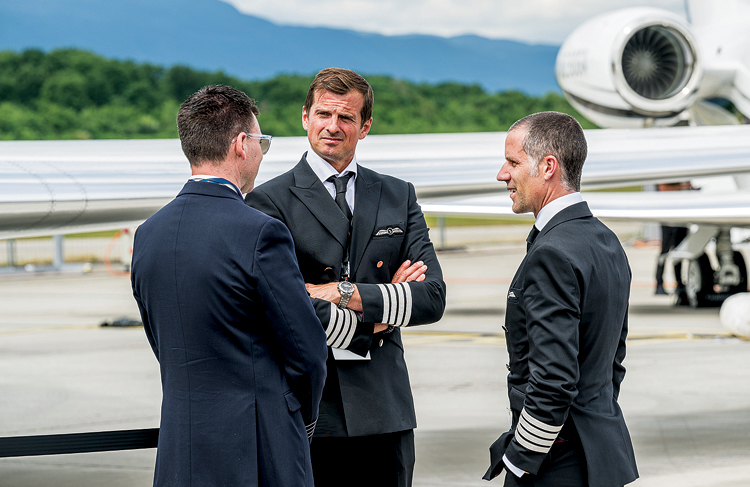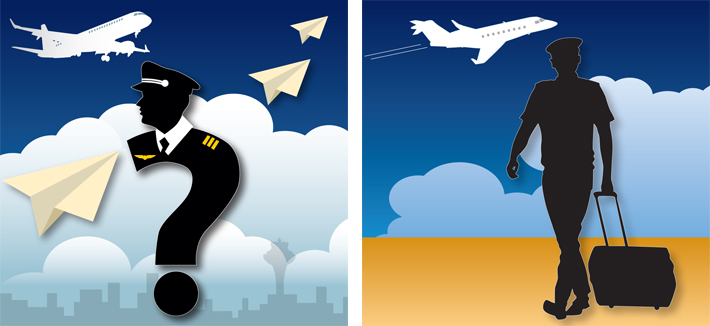INDIAN ARMED FORCES CHIEFS ON OUR RELENTLESS AND FOCUSED PUBLISHING EFFORTS

The insightful articles, inspiring narrations and analytical perspectives presented by the Editorial Team, establish an alluring connect with the reader. My compliments and best wishes to SP Guide Publications.

"Over the past 60 years, the growth of SP Guide Publications has mirrored the rising stature of Indian Navy. Its well-researched and informative magazines on Defence and Aerospace sector have served to shape an educated opinion of our military personnel, policy makers and the public alike. I wish SP's Publication team continued success, fair winds and following seas in all future endeavour!"

Since, its inception in 1964, SP Guide Publications has consistently demonstrated commitment to high-quality journalism in the aerospace and defence sectors, earning a well-deserved reputation as Asia's largest media house in this domain. I wish SP Guide Publications continued success in its pursuit of excellence.
- The layered Air Defence systems that worked superbly, the key element of Operation Sindoor
- Operation Sindoor | Day 2 DGMOs Briefing
- Operation Sindoor: Resolute yet Restrained
- India's Operation Sindoor Sends a Clear Message to Terror and the World – ‘ZERO TOLERANCE’
- Japan and India set forth a defence cooperation consultancy framework, talks on tank and jet engines
Turbulent Skies
Navigating Pilot Shortage in Commercial and Business Aviation will require a collaborative approach by all stakeholders

In the ever-evolving landscape of commercial and business aviation, the pilot shortage remains a critical challenge demanding strategic and collaborative solutions. As the industry strives to meet the escalating demands of a growing global population, finding a delicate balance between safety, efficiency, and workforce sustainability becomes paramount. By addressing the root causes of the shortage and implementing comprehensive solutions, the aviation industry can navigate these turbulent skies and secure a prosperous future for both seasoned aviators and those aspiring to soar to new heights.
WHY THE SHORTAGE?
The pilot shortage remains a critical challenge for the aviation industry, driven by factors such as an aging pilot workforce, surging demand for air travel, costly training, and a shortage of qualified instructors. With the average age of pilots surpassing 50, imminent retirements will exacerbate the deficit of skilled pilots. The escalating demand for air travel, projected to increase by 5 per cent annually over the next decade, further underscores the urgency of addressing this shortage. However, the escalating costs of pilot training act as a significant deterrent for aspiring aviators. In addition, the shortage of proficient flight instructors creates a bottleneck in the training pipeline, resulting in delays for new pilots to commence their careers. Some of the key factors that typically influence the requirement of Pilots in Commercial and Business Aviation are:
- Growing Air Travel Demand: At the heart of the pilot shortage saga is the exponential growth of the aviation industry. Emerging markets, in particular, have experienced a surge in demand for air travel that has outpaced the supply of qualified pilots. While this growth is indicative of the industry’s vitality, it has inadvertently led to an imbalance between supply and demand. This sustained growth creates a need for more pilots to operate the expanding fleet of aircraft. Airlines are grappling to secure an adequate number of pilots, resulting in operational challenges and potential compromises in safety standards.
- Aging Pilot Workforce: The aviation industry has been facing an issue with an aging pilot workforce. Many seasoned pilots are on the brink of retirement, creating a vacuum that proves difficult to fill. The impending retirements exacerbate the existing shortage, as the industry struggles to replace the wealth of experience and expertise set to exit the cockpit. Balancing the need for fresh talent with the irreplaceable knowledge of veteran aviators becomes a delicate task, requiring strategic planning and foresight.
- Expanding Airline Fleets: Airlines worldwide are continuously expanding their fleets to meet the growing demand for air travel. The introduction of new routes and the acquisition of additional aircraft require a larger pool of pilots. These fleet expansion plans are typically outlined in airline strategies.
- Stringent Training Requirements and Entry Barriers: Becoming a commercial pilot is a journey fraught with challenges, both in terms of time and financial investment. The extensive training required, coupled with stringent regulatory requirements, can dissuade potential pilots from pursuing a career in aviation. The arduous path to certification acts as a formidable barrier, deterring aspiring aviators and limiting the influx of new talent into the industry. Addressing this issue necessitates a re-evaluation of training programmes, exploring avenues to make them more accessible and cost-effective without compromising safety standards.
- Regulatory Requirements: Aviation authorities, such as the FAA (Federal Aviation Administration) in the United States or EASA (European Union Aviation Safety Agency), often impose regulations related to pilot-to-aircraft ratios, rest periods, and other safety measures. Compliance with these regulations can necessitate the hiring of more pilots.
- Emerging Markets: The aviation industry is experiencing rapid growth in emerging markets, particularly in Asia and the Middle East. New airlines and increased connectivity in these regions contribute to higher demand for pilots. Airlines operating in these areas may seek to hire both local and foreign pilots.
- Pilot Retirement Patterns: The retirement patterns of pilots can vary by region and airline, but many pilots retire between their late 50s and early 60s. This predictable attrition rate requires airlines to have a pipeline of newly trained pilots to fill these positions.
- Training Capacity: The capacity of flight training schools and academies can influence the availability of new pilots. The expansion of training programmes and facilities can help meet the increasing demand for qualified pilots.
- Economic Factors: The financial landscape for aspiring pilots, particularly at the entry level, has been a cause for concern. Many regional airlines offer starting salaries that are relatively low, making alternative career paths with better compensation more attractive. This economic reality has played a role in dissuading potential pilots, exacerbating the shortage. For the Airlines, the economic conditions can impact pilot hiring trends. Economic downturns may result in widespread layoffs, furloughs, and a reduction in training capacities leading to reduced pilot recruitment.
- Technological Advancements: Advancements in aircraft technology, including automation and avionics, may affect the number of pilots required for specific aircraft types. More automated systems may change the pilot-to-aircraft ratio.
Moreover, the scarcity of adept flight instructors, attributable to various factors including their aging demographics, escalating training costs, and insufficient government backing, compounds the predicament. This deficiency translates into extended waiting periods for aspiring pilots to embark on their professional journeys.
STEPS TAKEN TO AUGMENT PILOT INTAKE AND TRAINING
Addressing the pilot shortage requires a comprehensive and collaborative approach. Airlines, governments, and industry organisations often implement initiatives to address the pilot shortage. These efforts can include scholarship programmes, incentives for aspiring pilots, and partnerships with flight training institutions. To mitigate this shortage, multifaceted measures are being implemented:
- Airlines’ Incentives: Airlines can play a pivotal role in attracting and retaining qualified pilots by offering competitive salary packages, signing bonuses, and comprehensive benefits. Implementing tuition reimbursement programmes and other financial incentives can alleviate the economic burden on aspiring pilots, making the profession more appealing and financially viable for a broader range of individuals.
- Investment in Training Programmes: Airlines are investing in specialised training programmes designed to equip pilots with the requisite skills for commercial flying. Notably, Delta Air Lines has unveiled an accelerated training programme enabling pilots to obtain a commercial pilot license in just 12 months.
- Government Intervention: Governments, recognising the gravity of the situation, are taking concerted measures. The US government has launched an ambitious programme with the aim of training 10,000 new pilots within the next decade. Additionally, grants are being extended to flight schools to help defray the costs of training.
- Private Sector Contributions: Private companies are making significant strides in pilot training. These programmes, often more cost-effective and time-efficient than traditional flight schools, present a viable alternative for aspiring aviators. The ATP Flight School, for instance, offers a programme that can be completed in as little as nine months.
ADDITIONAL CONSIDERATIONS FOR LONG-TERM SOLUTIONS
In tandem with these measures, several additional strategies warrant consideration:
- Industry Collaboration: Open communication and collaboration between airlines, training organisations, and regulatory bodies are critical. Establishing industry-wide initiatives to share best practices and collectively tackle challenges can lead to more effective solutions. By fostering a culture of collaboration, the aviation industry can develop sustainable strategies to address the pilot shortage and promote a robust workforce.
- Affordable Training: Endeavours to make pilot training more financially accessible are pivotal. This may involve government subsidies for flight training or the development of innovative, cost-efficient training methods.
- Diversity and Inclusion Initiatives: Promoting diversity and inclusion in the aviation industry is imperative. Implementing targeted programmes to encourage a more diverse pool of pilot candidates, including women and minorities, is a step toward addressing the shortage. Presently, these groups are underrepresented in the field, necessitating focused efforts to promote inclusivity. Removing systemic barriers and biases in recruitment processes ensures equal opportunities, fostering an inclusive environment that reflects the diversity of the global population.
- Technological Innovations: Harnessing technology, particularly virtual reality, can revolutionise pilot training. By providing realistic simulations, it has the potential to significantly reduce the time and financial investments required for training in actual aircraft. Exploring advances in aviation technology, such as increased automation and remote piloting capabilities, presents opportunities to alleviate pressure on the pilot workforce. However, careful consideration of safety implications and the development of comprehensive regulatory frameworks are essential. Striking a balance between technological innovation and maintaining the highest safety standards is crucial for the successful integration of new technologies.
FUTURE OUTLOOK AND OPTIMISTIC DEVELOPMENTS
The pilot shortage is a multifaceted challenge necessitating a concerted, industry-wide effort. While the current initiatives are commendable, sustained focus on long-term solutions is imperative. By making training more accessible, promoting diversity and inclusion, and leveraging technological advancements, the aviation industry can navigate through this shortage and ensure a robust pipeline of pilots to meet the escalating demands of air travel. It is of paramount importance to act now, proactively!

While the challenges presented by the pilot shortage are significant, there are promising developments on the horizon. Technological advancements are underway that could revolutionise pilot training. For instance, the integration of virtual reality training could potentially streamline and enhance the learning process, making it more accessible and cost-effective. Furthermore, there is a growing interest in aviation among young people. This presents an opportunity to inspire the next generation of pilots and ensure a steady influx of talent into the profession. Initiatives such as aviation education programmes in schools and community outreach efforts can play a pivotal role in nurturing this interest.
The shortage of pilots in commercial and business aviation is a multifaceted issue stemming from factors like an aging pilot workforce, increased demand for air travel, expensive training costs, and a shortage of qualified instructors. While the industry is taking commendable steps to address these challenges, including offering incentives, investing in training programmes, and implementing government-backed initiatives, more comprehensive strategies are needed.
Efforts to make pilot training more affordable and accessible, as well as endeavours to diversify the pilot workforce, should be prioritised. Additionally, the integration of emerging technologies holds great potential in revolutionising the training process. By proactively addressing these issues, the aviation industry can work towards alleviating the pilot shortage and ensuring a sustainable and thriving future for commercial and business aviation.





